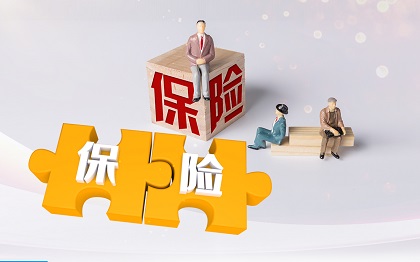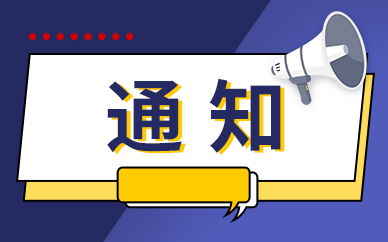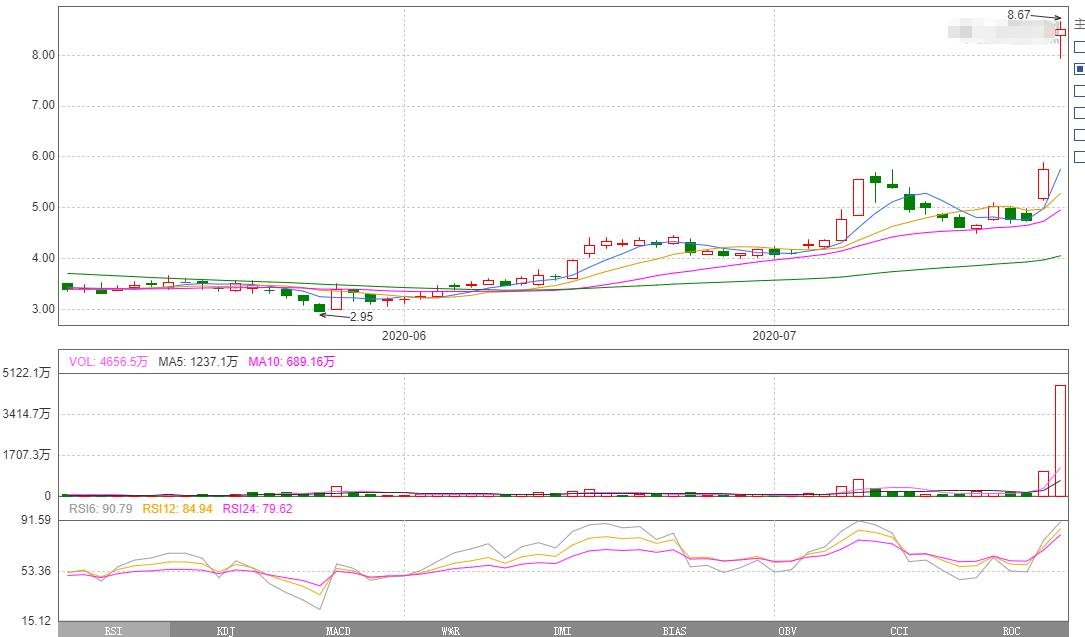详解SpringBoot接口异常处理机制及源码分析_今日精选
环境:Springboot3.0.5
概述如果在请求映射期间发生异常或从请求处理程序(例如@Controller)抛出异常,DispatcherServlet将委托给HandlerExceptionResolver
 (资料图片仅供参考)
(资料图片仅供参考)
下表列出了可用的HandlerExceptionResolver实现。
HandlerExceptionResolver实现类:
HandlerExceptionResolver | 描述 |
SimpleMappingExceptionResolver | 异常类名和错误视图名之间的映射。用于在浏览器应用程序中渲染错误页面。 |
DefaultHandlerExceptionResolver | 解析Spring MVC引发的异常,并将其映射为HTTP状态码。 |
ResponseStatusExceptionResolver | 使用@ResponseStatus注解解析异常,并根据注解中的值将异常映射为HTTP状态码。 |
ExceptionHandlerExceptionResolver | 通过在@Controller或@ControllerAdvice类中调用由@ExceptionHandler注释的方法来解决异常。 |
我们可以声明多个HandlerExceptionResolver
HandlerExceptionResolver的约定规定它可以返回:
指向错误视图的ModelAndView。如果异常是在解析器中处理的,则返回空的ModelAndView。如果异常仍然未解决,则为null,以便后续的解析器尝试,如果异常在最后仍然存在,则允许它向上冒泡到Servlet容器。Controller接口调用原理SpringMVC请求入口通过DispatcherServlet执行大致核心流程如下:
首先通过HandlerMapping确定目标Handler对象(如果接口是Controller那么这里会是HandlerMethod)通过上一步Handler对象,确定执行真正调用的HandlerAdapter这里以Controller接口为例,HandlerAdapter对象为RequestMappingHandlerAdapter
DispatcherServletpublic class DispatcherServlet extends FrameworkServlet { protected void doDispatch(...) throws Exception { HandlerExecutionChain mappedHandler = null; try { Exception dispatchException = null; // 根据请求确定Handler对象(遍历所有的HandlerMapping) mappedHandler = getHandler(processedRequest); // 根据上一步确定的Handler对象,确定HandlerAdapter对象 HandlerAdapter ha = getHandlerAdapter(mappedHandler.getHandler()); // 真正执行目标方法的调用 mv = ha.handle(processedRequest, response, mappedHandler.getHandler()); } catch (Exception ex) { dispatchException = ex; } catch (Throwable err) { dispatchException = new ServletException("Handler dispatch failed: " + err, err); } processDispatchResult(processedRequest, response, mappedHandler, mv, dispatchException); }}public class RequestMappingHandlerAdapter { protected ModelAndView handleInternal(...) throws Exception { ModelAndView mav; mav = invokeHandlerMethod(request, response, handlerMethod); } protected ModelAndView invokeHandlerMethod(...) throws Exception { // ... ServletInvocableHandlerMethod invocableMethod = createInvocableHandlerMethod(handlerMethod); // ... 对ServletInvocableHandlerMethod进行配置 invocableMethod.invokeAndHandle(webRequest, mavContainer); return getModelAndView(mavContainer, modelFactory, webRequest); }}ServletInvocableHandlerMethod执行参数解析目标Controller方法调用及返回值的处理
public class ServletInvocableHandlerMethod extends InvocableHandlerMethod { public void invokeAndHandle(...) throws Exception { // 该方法中会进行请求参数的解析及目标方法的调用 Object returnValue = invokeForRequest(webRequest, mavContainer, providedArgs); // ... try { // 处理返回值 this.returnValueHandlers.handleReturnValue(returnValue, getReturnValueType(returnValue), mavContainer, webRequest); } catch (Exception ex) { throw ex; } }}通过上面的源码分析,在调用过程中如果发生了异常会将异常直接抛出,在DispatcherServlet中会进行异常的处理。
异常解析原理分析接着上面的源码分析,当发生异常后最终会在DispatcherServlet#processDispatchResult方法中进行处理。
public class DispatcherServlet extends FrameworkServlet { /* * 默认情况下有如下2个异常解析器 * 1. DefaultErrorAttributes * 2. ExceptionHandlerExceptionResolver */ private List handlerExceptionResolvers; private void processDispatchResult(...) { if (exception != null) { Object handler = (mappedHandler != null ? mappedHandler.getHandler() : null); // 处理异常 mv = processHandlerException(request, response, handler, exception); } } protected ModelAndView processHandlerException(...) throws Exception { ModelAndView exMv = null; if (this.handlerExceptionResolvers != null) { // 遍历所有的异常解析器 for (HandlerExceptionResolver resolver : this.handlerExceptionResolvers) { // 解析异常,核心的解析器是ExceptionHandlerExceptionResolver exMv = resolver.resolveException(request, response, handler, ex); } } // ... }} ExceptionHandlerExceptionResolver类继承自AbstractHandlerMethodExceptionResolver该类又继承自AbstractHandlerExceptionResolver
// 调用父类(AbstractHandlerExceptionResolver)方法public abstract class AbstractHandlerExceptionResolver implements HandlerExceptionResolver, Ordered { public ModelAndView resolveException(...) { // doResolveException该方法在子类AbstractHandlerMethodExceptionResolver中重写 ModelAndView result = doResolveException(request, response, handler, ex); }}AbstractHandlerMethodExceptionResolver
public abstract class AbstractHandlerMethodExceptionResolver extends AbstractHandlerExceptionResolver { protected final ModelAndView doResolveException(...) { HandlerMethod handlerMethod = (handler instanceof HandlerMethod hm ? hm : null); return doResolveHandlerMethodException(request, response, handlerMethod, ex); }}ExceptionHandlerExceptionResolver
public class ExceptionHandlerExceptionResolver extends AbstractHandlerMethodExceptionResolver implements ApplicationContextAware, InitializingBean { protected ModelAndView doResolveHandlerMethodException(...) { // 该方法中会先从当前的Controller中查找是否有@ExceptionHandler注解的方法(如果匹配) // 如果没有再从全局的异常处理类句柄中查找 ServletInvocableHandlerMethod exceptionHandlerMethod = getExceptionHandlerMethod(handlerMethod, exception); if (exceptionHandlerMethod == null) { return null; } // 执行异常处理方法的调用 exceptionHandlerMethod.invokeAndHandle(webRequest, mavContainer, arguments); } protected ServletInvocableHandlerMethod getExceptionHandlerMethod(...) { Class handlerType = null; if (handlerMethod != null) { handlerType = handlerMethod.getBeanType(); // 缓存并设置当前执行Class对应的ExceptionHandlerMethodResolver // ExceptionHandlerMethodResolver构造函数中会解析当前类中的所有方法是否有@ExceptionHandler注解 ExceptionHandlerMethodResolver resolver = this.exceptionHandlerCache.computeIfAbsent(handlerType, ExceptionHandlerMethodResolver::new); // 解析是否匹配当前发生的异常 Method method = resolver.resolveMethod(exception); if (method != null) { return new ServletInvocableHandlerMethod(handlerMethod.getBean(), method, this.applicationContext); } } // 如果上面的执行的Class中没有找到对应处理器,那么就从全局的异常处理中进行查找匹配 // 这里的exceptionHandlerAdviceCache集合在类初始化执行时已经处理完成 for (Map.Entry entry : this.exceptionHandlerAdviceCache.entrySet()) { ControllerAdviceBean advice = entry.getKey(); if (advice.isApplicableToBeanType(handlerType)) { ExceptionHandlerMethodResolver resolver = entry.getValue(); Method method = resolver.resolveMethod(exception); if (method != null) { return new ServletInvocableHandlerMethod(advice.resolveBean(), method, this.applicationContext); } } } return null; }} 通过上面的源码分析你应该知道了关于SpringMVC中异常处理的原理。
当上面的异常处理机制都没法处理,那么将会调用默认的/error接口。
public class ErrorMvcAutoConfiguration { @Bean @ConditionalOnMissingBean(value = ErrorController.class, search = SearchStrategy.CURRENT) public BasicErrorController basicErrorController(ErrorAttributes errorAttributes, ObjectProvider errorViewResolvers) { return new BasicErrorController(errorAttributes, this.serverProperties.getError(), errorViewResolvers.orderedStream().toList()); } } @Controller@RequestMapping("${server.error.path:${error.path:/error}}")public class BasicErrorController extends AbstractErrorController {}上面的错误接口/error在容器启动时会自动注册到内嵌的容器中,如:Tomcat。
标签:
-
 详解SpringBoot接口异常处理机制及源码分析_今日精选 环境:Springboot3 0 5概述如果在请求映射期间发生异常或从请求处理程
详解SpringBoot接口异常处理机制及源码分析_今日精选 环境:Springboot3 0 5概述如果在请求映射期间发生异常或从请求处理程 -
 电报解读|AI促光通信产业高速发展 薄膜铌酸锂潜在市场空间接近百亿 精品VIP投研内容
电报解读|AI促光通信产业高速发展 薄膜铌酸锂潜在市场空间接近百亿 精品VIP投研内容 -
 新日股份是哪一年上市的?新日股份主要产品是什么? 新日股份是哪一年上市的?603787 新日股份公司(简称:新日股份)于201
新日股份是哪一年上市的?新日股份主要产品是什么? 新日股份是哪一年上市的?603787 新日股份公司(简称:新日股份)于201 -
 西湖划船刺客运营方被罚12万 西湖“划船刺客”事件最新进展! 近日,杭州西湖风景名胜区国有资本投资运营有限公司因消费侵权行为,被
西湖划船刺客运营方被罚12万 西湖“划船刺客”事件最新进展! 近日,杭州西湖风景名胜区国有资本投资运营有限公司因消费侵权行为,被 -
 佐力药业(300181.SZ):2022年度乌灵系列营业收入达10.92亿元|全球热头条 格隆汇6月15日丨佐力药业300181300181SZ召开线上会议就乌灵系列的收入
佐力药业(300181.SZ):2022年度乌灵系列营业收入达10.92亿元|全球热头条 格隆汇6月15日丨佐力药业300181300181SZ召开线上会议就乌灵系列的收入 -
 腊八蒜怎么腌制又脆又绿(腊八蒜的做法)|天天观点 腊八蒜怎么腌制又脆又绿?1、要选择紫皮蒜,紫皮蒜瓣小,更易泡透变
腊八蒜怎么腌制又脆又绿(腊八蒜的做法)|天天观点 腊八蒜怎么腌制又脆又绿?1、要选择紫皮蒜,紫皮蒜瓣小,更易泡透变
-
 夫妻共同遗嘱什么时候开始生效?遗嘱继承诉讼时效为多久? 一、夫妻共同遗嘱什么时候开始生效夫妻共同遗嘱生效的时间是共同遗嘱的所有被继承人全部去世以后。夫妻共同遗嘱是指夫妻因意思表示一致而共
夫妻共同遗嘱什么时候开始生效?遗嘱继承诉讼时效为多久? 一、夫妻共同遗嘱什么时候开始生效夫妻共同遗嘱生效的时间是共同遗嘱的所有被继承人全部去世以后。夫妻共同遗嘱是指夫妻因意思表示一致而共 -
 怎样遗嘱才算有效什么样是无效?什么遗嘱的效力是最高的? 一、怎样遗嘱才算有效什么样是无效有效遗嘱的条件如下:1 立遗嘱人必须具有遗嘱能力。2 遗嘱必须是遗嘱人的真实意思表示。3 遗嘱内容不得违
怎样遗嘱才算有效什么样是无效?什么遗嘱的效力是最高的? 一、怎样遗嘱才算有效什么样是无效有效遗嘱的条件如下:1 立遗嘱人必须具有遗嘱能力。2 遗嘱必须是遗嘱人的真实意思表示。3 遗嘱内容不得违 -
 拼多多客服账号怎么进行创建?拼多多客服外包平台怎么加入? 拼多多客服账号怎么进行创建?登录拼后台点击设置子账号管理,在右
拼多多客服账号怎么进行创建?拼多多客服外包平台怎么加入? 拼多多客服账号怎么进行创建?登录拼后台点击设置子账号管理,在右 -
 法律规定未成年人可以立遗嘱的吗?遗嘱的形式有哪些? 一、法律规定未成年人可以立遗嘱的吗法律规定未成年人不可以立遗嘱的,未成年人是属于无民事行为能力或者限制民事行为能力的人,《中华人民
法律规定未成年人可以立遗嘱的吗?遗嘱的形式有哪些? 一、法律规定未成年人可以立遗嘱的吗法律规定未成年人不可以立遗嘱的,未成年人是属于无民事行为能力或者限制民事行为能力的人,《中华人民 - 喜鹊到联合快狗打车,致力解决空运“前后一公里” 随着社会生活发展的需要,物流运输的作用也越来越显著。物流的快速发展不仅保障了我们日常物资供应,也为企业的高效运转提供了后盾支持。而空
-
 详解SpringBoot接口异常处理机制及源码分析_今日精选 环境:Springboot3 0 5概述如果在请求映射期间发生异常或从请求处理程
详解SpringBoot接口异常处理机制及源码分析_今日精选 环境:Springboot3 0 5概述如果在请求映射期间发生异常或从请求处理程 -
 微资讯!巴黎治鼠患失败!鼠患怎么解决? 巴黎治鼠患失败!近日,法国巴黎副市长安妮·苏里斯宣布,巴黎市政府
微资讯!巴黎治鼠患失败!鼠患怎么解决? 巴黎治鼠患失败!近日,法国巴黎副市长安妮·苏里斯宣布,巴黎市政府 -
 录像遗嘱的生效条件需要满足哪些?录音遗嘱需要见证人吗? 一、录像遗嘱的生效条件需要满足哪些录像遗嘱的生效条件需要满足:1 行为人是完全民事行为能力人;2 行为人是真实的意思表示;3 遗嘱内容不违
录像遗嘱的生效条件需要满足哪些?录音遗嘱需要见证人吗? 一、录像遗嘱的生效条件需要满足哪些录像遗嘱的生效条件需要满足:1 行为人是完全民事行为能力人;2 行为人是真实的意思表示;3 遗嘱内容不违 -
 房贷等额本金怎么算?房贷两种还款方式都是什么? 精彩看点 房贷等额本金和等额本息的区别是什么?1、等额本息法(1)等额本息法
房贷等额本金怎么算?房贷两种还款方式都是什么? 精彩看点 房贷等额本金和等额本息的区别是什么?1、等额本息法(1)等额本息法 -
 电脑对我们有什么好处?win7电脑调节亮度不见了怎么办?|热点聚焦 电脑对我们有什么好处?电脑对人的好处:开阔眼界,了解知识,查资料
电脑对我们有什么好处?win7电脑调节亮度不见了怎么办?|热点聚焦 电脑对我们有什么好处?电脑对人的好处:开阔眼界,了解知识,查资料 -
 木雕、砖雕、面具、唐卡……尼泊尔手工艺品展亮相三亚 近日,第三届南山非遗节正在三亚南山文化旅游区火热进行中,海南省非遗
木雕、砖雕、面具、唐卡……尼泊尔手工艺品展亮相三亚 近日,第三届南山非遗节正在三亚南山文化旅游区火热进行中,海南省非遗 -
 火星报创办时间什么时候?火星报创办背景是什么? 火星报创办时间什么时候?1900年12月24日,火星报是由列宁领导的,俄
火星报创办时间什么时候?火星报创办背景是什么? 火星报创办时间什么时候?1900年12月24日,火星报是由列宁领导的,俄 -
 理财没到期急用钱怎么办?钱存了理财没到期可以取出来吗? 每日速看 在理财过程中,有时候投资者可能会遇到紧急的资金需求,而此时投资
理财没到期急用钱怎么办?钱存了理财没到期可以取出来吗? 每日速看 在理财过程中,有时候投资者可能会遇到紧急的资金需求,而此时投资 -
 立遗嘱怎样才有法律效应?订立遗嘱形式有哪些? 一、立遗嘱怎样才有法律效应立遗嘱满足下列条件才有法律效应:1 主体合法主体必须有完全民事行为能力;立遗嘱人必须年满18周岁;精神正常的有
立遗嘱怎样才有法律效应?订立遗嘱形式有哪些? 一、立遗嘱怎样才有法律效应立遗嘱满足下列条件才有法律效应:1 主体合法主体必须有完全民事行为能力;立遗嘱人必须年满18周岁;精神正常的有 -
 环球热推荐:琼港新企业交流中心落户三亚 6月13日,海南自由贸易港(三亚)新加坡投资交流会在新加坡举行,市投
环球热推荐:琼港新企业交流中心落户三亚 6月13日,海南自由贸易港(三亚)新加坡投资交流会在新加坡举行,市投 -
 5万级超高性价比小车,瑞虎3x拼多多专属电商版上线,价格一卷到底 通过电商平台购买汽车产品,已成为年轻人喜闻乐见的消费形式,而汽车厂商也都乐于携手电商平台,以更多的实惠和惊喜,来提升用户的消费和服
5万级超高性价比小车,瑞虎3x拼多多专属电商版上线,价格一卷到底 通过电商平台购买汽车产品,已成为年轻人喜闻乐见的消费形式,而汽车厂商也都乐于携手电商平台,以更多的实惠和惊喜,来提升用户的消费和服 -
 能打开各种网站的浏览器有哪些 电脑浏览器记录删了怎么恢复? 能打开各种网站的浏览器有哪些?1、Chrome浏览器。Chrome浏览器是一
能打开各种网站的浏览器有哪些 电脑浏览器记录删了怎么恢复? 能打开各种网站的浏览器有哪些?1、Chrome浏览器。Chrome浏览器是一 -
 京东物流落成全球规模最大仓拣一体智能物流园区 一箱刚从苏州蟹塘现捕现捞的“六月黄”(临近成熟的大闸蟹)14日从京东物
京东物流落成全球规模最大仓拣一体智能物流园区 一箱刚从苏州蟹塘现捕现捞的“六月黄”(临近成熟的大闸蟹)14日从京东物 -
 今日要闻!天然乳脂奶油和动物奶油的区别是什么?乳脂奶油和动物奶油哪个更健康? 天然乳脂奶油和动物奶油的区别是什么?一、成分不同天然乳脂奶油是从
今日要闻!天然乳脂奶油和动物奶油的区别是什么?乳脂奶油和动物奶油哪个更健康? 天然乳脂奶油和动物奶油的区别是什么?一、成分不同天然乳脂奶油是从 -
 电动皮卡 怎么突然就行了? 全球快讯 电动皮卡怎么突然就行了?
电动皮卡 怎么突然就行了? 全球快讯 电动皮卡怎么突然就行了? -
 高速错过出口 丰田亚洲龙缓行被大货车追尾致5死 官方:两司机均分心驾驶-环球简讯 高速错过出口丰田亚洲龙缓行被大货车追尾致5死官方:两司机均分心驾驶
高速错过出口 丰田亚洲龙缓行被大货车追尾致5死 官方:两司机均分心驾驶-环球简讯 高速错过出口丰田亚洲龙缓行被大货车追尾致5死官方:两司机均分心驾驶 -
 平均工资是实发工资还是应发工资?平均工资怎么算? 平均工资是实发工资还是应发工资?应发工资。经济补偿的月工资按照劳
平均工资是实发工资还是应发工资?平均工资怎么算? 平均工资是实发工资还是应发工资?应发工资。经济补偿的月工资按照劳 -
 极萌Jmoon带来变美科技新革命 极萌Jmoon,作为一家专注于极速美容科技的公司,一直在持续进行着市场调研和技术创新。重视产品的质量和行业标准,致力于推动行业朝着标准
极萌Jmoon带来变美科技新革命 极萌Jmoon,作为一家专注于极速美容科技的公司,一直在持续进行着市场调研和技术创新。重视产品的质量和行业标准,致力于推动行业朝着标准 -
 环球短讯!交通商业险赔偿范围是什么?车损险是赔别人还是赔自己? 交通商业险赔偿范围是什么?交通商业险赔偿范围一般是由双方当事人约
环球短讯!交通商业险赔偿范围是什么?车损险是赔别人还是赔自己? 交通商业险赔偿范围是什么?交通商业险赔偿范围一般是由双方当事人约 -
 风行播放器怎么查看播放记录?风行播放器打不开怎么办?_天天速看料 风行播放器怎么查看播放记录?在风行播放器上查看播放记录请参考:现
风行播放器怎么查看播放记录?风行播放器打不开怎么办?_天天速看料 风行播放器怎么查看播放记录?在风行播放器上查看播放记录请参考:现 -
 肋骨断了吃什么好?肋骨断了2根能自愈吗? 肋骨断了也就是肋骨骨折,一般要多吃一些含钙丰富的食物,补充人体
肋骨断了吃什么好?肋骨断了2根能自愈吗? 肋骨断了也就是肋骨骨折,一般要多吃一些含钙丰富的食物,补充人体 -
 茶杯犬一岁等于人的几岁? 茶杯犬的缺点有哪些?_最新资讯 现在很多家庭都会养宠物,而小狗就是家庭宠物的选择之一,狗的品种
茶杯犬一岁等于人的几岁? 茶杯犬的缺点有哪些?_最新资讯 现在很多家庭都会养宠物,而小狗就是家庭宠物的选择之一,狗的品种 -
 环球今日讯!股票做t是什么意思?股票做t怎么计算成本? 股票做t是什么意思?股票做t,即股票进行t+0日交易操作的简称,是指
环球今日讯!股票做t是什么意思?股票做t怎么计算成本? 股票做t是什么意思?股票做t,即股票进行t+0日交易操作的简称,是指 -
 每日热文:全身骨头酸痛是怎么治?骨头疼吃什么钙片? 全身骨骼酸痛,主要原因是骨关节炎或者是骨质疏松症,骨关节炎会造
每日热文:全身骨头酸痛是怎么治?骨头疼吃什么钙片? 全身骨骼酸痛,主要原因是骨关节炎或者是骨质疏松症,骨关节炎会造 -
 什么是机动车第三者责任险?机动车损失保险有必要买吗? 什么是机动车第三者责任险?机动车第三者责任险是指被保险人或其允许
什么是机动车第三者责任险?机动车损失保险有必要买吗? 什么是机动车第三者责任险?机动车第三者责任险是指被保险人或其允许 -
 前沿资讯!多个保险能一起报销吗?太平人寿增额终身寿险有哪些? 多个保险能一起报销吗?保险可以投多份,但不一定可以重复报销,需要
前沿资讯!多个保险能一起报销吗?太平人寿增额终身寿险有哪些? 多个保险能一起报销吗?保险可以投多份,但不一定可以重复报销,需要 -
 【天天时快讯】李靓蕾是台湾人吗?李靓蕾是中日混血吗? 李靓蕾是台湾人吗?不是,是美国人。李靓蕾,1986年4月14日出生,哥伦比
【天天时快讯】李靓蕾是台湾人吗?李靓蕾是中日混血吗? 李靓蕾是台湾人吗?不是,是美国人。李靓蕾,1986年4月14日出生,哥伦比 -
 FOF基金有什么优势?私募基金和公募基金谁收益更高? FOF基金有什么优势?1 解决基金产品筛选难题。目前国内公募基金数量
FOF基金有什么优势?私募基金和公募基金谁收益更高? FOF基金有什么优势?1 解决基金产品筛选难题。目前国内公募基金数量 -
 香瓜种植时间和方法是什么?香瓜热量高吗减肥期间能吃吗?-世界播资讯 香瓜种植时间和方法是什么?香瓜的种植时间是每年的8~10月份。香瓜种
香瓜种植时间和方法是什么?香瓜热量高吗减肥期间能吃吗?-世界播资讯 香瓜种植时间和方法是什么?香瓜的种植时间是每年的8~10月份。香瓜种 -
 焦点热文:三亚建立“热线+督查+制度” 三位一体破难题机制 日前,三亚多部门联合下发《关于建立“热线+督查+制度”三位一体同推互
焦点热文:三亚建立“热线+督查+制度” 三位一体破难题机制 日前,三亚多部门联合下发《关于建立“热线+督查+制度”三位一体同推互 -
 选址日报:三星投215亿建生产基地;诺和诺德斥164亿扩建工厂 三星投215亿建生产基地据最新消息,三星旗下负责电池和电子材料制造的
选址日报:三星投215亿建生产基地;诺和诺德斥164亿扩建工厂 三星投215亿建生产基地据最新消息,三星旗下负责电池和电子材料制造的 -
 天天亮点!装700件快递大货车高速爆胎翻车 车轮花纹都磨没了 装700件快递大货车高速爆胎翻车车轮花纹都磨没了
天天亮点!装700件快递大货车高速爆胎翻车 车轮花纹都磨没了 装700件快递大货车高速爆胎翻车车轮花纹都磨没了 -
 windows7版本区别在哪 windows7版本过低怎么更新?|环球要闻 windows7版本区别在哪?Windows 7有6个版本:Windows 7 Starter(
windows7版本区别在哪 windows7版本过低怎么更新?|环球要闻 windows7版本区别在哪?Windows 7有6个版本:Windows 7 Starter( -
 热讯:小米14设计定了:标准版小直屏 Pro版极窄微曲屏 (相关资料图)6月15日消息,高通今年的骁龙技术峰会提前到10月份,这
热讯:小米14设计定了:标准版小直屏 Pro版极窄微曲屏 (相关资料图)6月15日消息,高通今年的骁龙技术峰会提前到10月份,这 -
 三亚划定21个城市更新片区 以天涯区和吉阳区的老城片区为主_天天热点评 日前,《三亚市中心城区城市更新专项规划》(以下简称《规划》)出炉,
三亚划定21个城市更新片区 以天涯区和吉阳区的老城片区为主_天天热点评 日前,《三亚市中心城区城市更新专项规划》(以下简称《规划》)出炉, -
 观点:电脑上的备份系统数据在哪查看?win10备份系统数据的方式有哪些? 电脑上的备份系统数据在哪查看?1 打开文件资源管理器,进入计算机或
观点:电脑上的备份系统数据在哪查看?win10备份系统数据的方式有哪些? 电脑上的备份系统数据在哪查看?1 打开文件资源管理器,进入计算机或 -
 优先股和普通股有什么区别?普通股和优先股的共同点有哪些?_热议 优先股和普通股有什么区别呢?优先股和普通股区别介绍优先股是有优先
优先股和普通股有什么区别?普通股和优先股的共同点有哪些?_热议 优先股和普通股有什么区别呢?优先股和普通股区别介绍优先股是有优先 -
 基金定投选择哪种基金?基金存在的风险有哪些? 基金定投应该选择什么样的基金?1 波动大基金定投的收益主要是通过微
基金定投选择哪种基金?基金存在的风险有哪些? 基金定投应该选择什么样的基金?1 波动大基金定投的收益主要是通过微 -
 5月份网约车共收到订单信息7.35亿单 环比上升4.2%|环球速看料 5月份,面向乘客与网约车平台公司共同提供服务的平台(俗称“聚合平台”
5月份网约车共收到订单信息7.35亿单 环比上升4.2%|环球速看料 5月份,面向乘客与网约车平台公司共同提供服务的平台(俗称“聚合平台” -
 最新消息:上下川岛在哪个城市?下川岛为什么叫天堂? 上下川岛在哪个城市台山市上下川岛-上川岛、下川岛隶属于广东省台山
最新消息:上下川岛在哪个城市?下川岛为什么叫天堂? 上下川岛在哪个城市台山市上下川岛-上川岛、下川岛隶属于广东省台山 -
 定期存款利息什么时候到账?定期到期为什么不到账? 定期存款利息什么时候到账在定期存款到账当天利息到账,存款人可以
定期存款利息什么时候到账?定期到期为什么不到账? 定期存款利息什么时候到账在定期存款到账当天利息到账,存款人可以 -
 常州红梅阁是怎样的景点?常州红梅阁有什么景观? 常州红梅阁是怎样的景点?红梅阁在江苏省常州市区红梅公园东南隅。
常州红梅阁是怎样的景点?常州红梅阁有什么景观? 常州红梅阁是怎样的景点?红梅阁在江苏省常州市区红梅公园东南隅。 -
 时讯:背书转让的限制主要有哪些?背书转让具有哪些法律效力? 背书转让的限制主要有哪些?(1)出票人在汇票上记载不得转让字样的,
时讯:背书转让的限制主要有哪些?背书转让具有哪些法律效力? 背书转让的限制主要有哪些?(1)出票人在汇票上记载不得转让字样的, -
 每日看点!“期待更多有志青年返乡创业”(帮扶县驻村手记) 走进河南省商丘市虞城县大侯镇聂楼村产业园的一家箱包厂,敞亮的车间里
每日看点!“期待更多有志青年返乡创业”(帮扶县驻村手记) 走进河南省商丘市虞城县大侯镇聂楼村产业园的一家箱包厂,敞亮的车间里 -
 谷歌推出多项功能:识别皮肤病、模拟试穿衣服
当前视点 IT之家6月15日消息,谷歌近日宣布了一系列新的搜索更新,涵盖了旅游规
谷歌推出多项功能:识别皮肤病、模拟试穿衣服
当前视点 IT之家6月15日消息,谷歌近日宣布了一系列新的搜索更新,涵盖了旅游规
热门资讯
-
 今日要闻!天然乳脂奶油和动物奶油的区别是什么?乳脂奶油和动物奶油哪个更健康? 天然乳脂奶油和动物奶油的区别是什...
今日要闻!天然乳脂奶油和动物奶油的区别是什么?乳脂奶油和动物奶油哪个更健康? 天然乳脂奶油和动物奶油的区别是什... -
 5万级超高性价比小车,瑞虎3x拼多多专属电商版上线,价格一卷到底 通过电商平台购买汽车产品,已成为...
5万级超高性价比小车,瑞虎3x拼多多专属电商版上线,价格一卷到底 通过电商平台购买汽车产品,已成为... -
 天猫国际支付方式有云闪付吗?天猫国际用户购买须知是啥意思? 天猫国际支付方式有云闪付吗?有一...
天猫国际支付方式有云闪付吗?天猫国际用户购买须知是啥意思? 天猫国际支付方式有云闪付吗?有一... -
 极萌Jmoon带来变美科技新革命 极萌Jmoon,作为一家专注于极速美...
极萌Jmoon带来变美科技新革命 极萌Jmoon,作为一家专注于极速美...
观察
图片新闻
-
 木雕、砖雕、面具、唐卡……尼泊尔手工艺品展亮相三亚 近日,第三届南山非遗节正在三亚南...
木雕、砖雕、面具、唐卡……尼泊尔手工艺品展亮相三亚 近日,第三届南山非遗节正在三亚南... -
 清淤疏浚 改善水质 6月14日,在三亚河上,工作人员正...
清淤疏浚 改善水质 6月14日,在三亚河上,工作人员正... -
 环球热推荐:琼港新企业交流中心落户三亚 6月13日,海南自由贸易港(三亚)...
环球热推荐:琼港新企业交流中心落户三亚 6月13日,海南自由贸易港(三亚)... -
 焦点热文:三亚建立“热线+督查+制度” 三位一体破难题机制 日前,三亚多部门联合下发《关于建...
焦点热文:三亚建立“热线+督查+制度” 三位一体破难题机制 日前,三亚多部门联合下发《关于建...
精彩新闻
-
 win7电脑调节亮度不见了怎么回事?使用电脑的好处有哪些?-环球观焦点 win7电脑调节亮度不见了怎么回事?1...
win7电脑调节亮度不见了怎么回事?使用电脑的好处有哪些?-环球观焦点 win7电脑调节亮度不见了怎么回事?1... -
 膏药代加工发展迎来新机遇 仙佑集团质量严把关受关注-天天即时 作为国内知名的膏药代加工企业之一...
膏药代加工发展迎来新机遇 仙佑集团质量严把关受关注-天天即时 作为国内知名的膏药代加工企业之一... -
 哪些时间点不适合提前还款?房贷提前还款计算器怎么使用? 提前还贷有什么要求吗?1、提前还...
哪些时间点不适合提前还款?房贷提前还款计算器怎么使用? 提前还贷有什么要求吗?1、提前还... -
 互联网+医疗助力研发投入 郑州膏药代加工保障质量安全 作为国内知名的膏药代加工企业之一...
互联网+医疗助力研发投入 郑州膏药代加工保障质量安全 作为国内知名的膏药代加工企业之一... -
 快播:怎么判断肌腱损伤程度?肌腱损伤多久才能恢复? 判断肌腱损伤的程度,主要根据临床...
快播:怎么判断肌腱损伤程度?肌腱损伤多久才能恢复? 判断肌腱损伤的程度,主要根据临床... -
 斥资226亿元,TI将在马来西亚新建两座工厂 6月13日,德州仪器(TI)宣布将在...
斥资226亿元,TI将在马来西亚新建两座工厂 6月13日,德州仪器(TI)宣布将在... -
 互联网+医疗助力研发投入 郑州膏药代加工保障质量安全 作为国内知名的膏药代加工企业之一...
互联网+医疗助力研发投入 郑州膏药代加工保障质量安全 作为国内知名的膏药代加工企业之一... -
 怎么关闭搜狗输入法弹窗广告?搜狗浏览器推荐怎么关闭? 怎么关闭搜狗输入法弹窗广告?1 首...
怎么关闭搜狗输入法弹窗广告?搜狗浏览器推荐怎么关闭? 怎么关闭搜狗输入法弹窗广告?1 首... -
 不良信用记录包括什么?不良信用记录几年可以消除?-全球即时看 不良信用记录包括什么?不良信用记...
不良信用记录包括什么?不良信用记录几年可以消除?-全球即时看 不良信用记录包括什么?不良信用记... -
 公积金买房子怎么使用?2021年的买房贷款利率多少? 买房时没有公积金后续有了还能用吗...
公积金买房子怎么使用?2021年的买房贷款利率多少? 买房时没有公积金后续有了还能用吗... -
 腾讯有意全资收购搜狗 王小川是怎么回应的? 天天观察 腾讯有意全资收购搜狗搜狗公告显示...
腾讯有意全资收购搜狗 王小川是怎么回应的? 天天观察 腾讯有意全资收购搜狗搜狗公告显示... -
 天天百事通!提取约翰・列侬声音 披头士借助AI发行最后一曲 (相关资料图)据BBC报道,即将迎来8...
天天百事通!提取约翰・列侬声音 披头士借助AI发行最后一曲 (相关资料图)据BBC报道,即将迎来8... -
 世界时讯:韧带损伤怎么办?韧带损伤吃什么药好得快? 如果在剧烈运动时,没有适当保护,...
世界时讯:韧带损伤怎么办?韧带损伤吃什么药好得快? 如果在剧烈运动时,没有适当保护,... -
 恐龙之乡在哪个地方?自贡市的邮政编码是多少? 恐龙之乡在哪个地方?恐龙之乡有:四...
恐龙之乡在哪个地方?自贡市的邮政编码是多少? 恐龙之乡在哪个地方?恐龙之乡有:四... -
 宽指基金什么意思?红利指数是宽基指数吗?-全球微资讯 宽指基金什么意思?宽基包括指数基...
宽指基金什么意思?红利指数是宽基指数吗?-全球微资讯 宽指基金什么意思?宽基包括指数基... -
 为困境未成年人提供家庭教育指导 为了促进家庭教育的科学化、规范化...
为困境未成年人提供家庭教育指导 为了促进家庭教育的科学化、规范化... -
 端午节股市放几天假 端午节股市开盘吗?|天天简讯 端午节股市放几天假端午节股市休市...
端午节股市放几天假 端午节股市开盘吗?|天天简讯 端午节股市放几天假端午节股市休市... -
 今亮点!只要钱够多 哪怕危险行业狮子座也会勇敢尝试? 金牛座:钱是最重要的金牛座是出了...
今亮点!只要钱够多 哪怕危险行业狮子座也会勇敢尝试? 金牛座:钱是最重要的金牛座是出了... -
 600820资金流向是什么 600820主力控盘怎么样?|快播 600820资金流向是什么【隧道股份(6...
600820资金流向是什么 600820主力控盘怎么样?|快播 600820资金流向是什么【隧道股份(6... -
 世界今亮点!徐州泉山:“微改造”助力“大文明” “微环境”塑造“微幸福” “今天好开心,我连闯三关!”近日...
世界今亮点!徐州泉山:“微改造”助力“大文明” “微环境”塑造“微幸福” “今天好开心,我连闯三关!”近日... -
 世界最新:工期定额蕴含什么内容? 工期定额的内容包括哪些? 工期定额蕴含什么内容?工期定额是...
世界最新:工期定额蕴含什么内容? 工期定额的内容包括哪些? 工期定额蕴含什么内容?工期定额是... -
 全球信息:散户和机构投资者的资金实力一样吗?散户和机构投资者的作用一样吗? 散户和机构投资者的资金实力一样吗...
全球信息:散户和机构投资者的资金实力一样吗?散户和机构投资者的作用一样吗? 散户和机构投资者的资金实力一样吗... -
 热点评!电磁除铁器使用应注意什么?电磁除铁器有什么特征? 电磁除铁器使用应注意什么?1、制定...
热点评!电磁除铁器使用应注意什么?电磁除铁器有什么特征? 电磁除铁器使用应注意什么?1、制定... -
 世界热消息:小区十大冷门暴利生意有哪些?未来开什么店最赚钱? 小区十大冷门暴利生意有哪些?1 母...
世界热消息:小区十大冷门暴利生意有哪些?未来开什么店最赚钱? 小区十大冷门暴利生意有哪些?1 母... -
 全球快资讯:基本面是什么意思?基本面包括哪些方面? 基本面是什么意思?基本面是指对宏...
全球快资讯:基本面是什么意思?基本面包括哪些方面? 基本面是什么意思?基本面是指对宏... -
 公积金贷款还款怎么还?二手房能用公积金吗?_全球今亮点 公积金贷款办理流程是什么?1、申...
公积金贷款还款怎么还?二手房能用公积金吗?_全球今亮点 公积金贷款办理流程是什么?1、申... -
 怎样的录像遗嘱才有效?遗嘱的形式是什么? 一、怎样的录像遗嘱才有效录像遗嘱...
怎样的录像遗嘱才有效?遗嘱的形式是什么? 一、怎样的录像遗嘱才有效录像遗嘱... -
 南通濠河风景区是怎样的景区?南通濠河风景区有哪些景观? 南通濠河风景区是怎样的景区?南通...
南通濠河风景区是怎样的景区?南通濠河风景区有哪些景观? 南通濠河风景区是怎样的景区?南通... -
 荷兰猪的寿命有多长 ?荷兰猪简介_当前热议 荷兰猪其实指的就是豚鼠,又叫天竺...
荷兰猪的寿命有多长 ?荷兰猪简介_当前热议 荷兰猪其实指的就是豚鼠,又叫天竺... -
 环球速讯:退休后如何存钱收益高?老年人怎么理财合适? 很多老人退休后喜欢做资产规划,如...
环球速讯:退休后如何存钱收益高?老年人怎么理财合适? 很多老人退休后喜欢做资产规划,如... -
 环球观天下!仓鼠怀孕了怎么办?仓鼠怀孕有什么特征呢? 大部分人都有养小仓鼠的经历吧,仓...
环球观天下!仓鼠怀孕了怎么办?仓鼠怀孕有什么特征呢? 大部分人都有养小仓鼠的经历吧,仓... -
 天天通讯!整存整取起存金额多少 ?整存整取可以提前取吗? 银行定期存款包括整存整取、整存零...
天天通讯!整存整取起存金额多少 ?整存整取可以提前取吗? 银行定期存款包括整存整取、整存零... -
 杠杆炒股是什么意思?加杠杆炒股有什么门槛? 杠杆炒股是什么意思?杠杆炒股是指...
杠杆炒股是什么意思?加杠杆炒股有什么门槛? 杠杆炒股是什么意思?杠杆炒股是指... -
 电脑nvidia控制面板闪退怎么回事?电脑nvidia控制面板在哪里? 电脑nvidia控制面板闪退怎么回事?...
电脑nvidia控制面板闪退怎么回事?电脑nvidia控制面板在哪里? 电脑nvidia控制面板闪退怎么回事?... -
 临近抄底现象是什么(股票抄底是什么意思)|当前通讯 临近抄底现象是什么(散户为什么喜...
临近抄底现象是什么(股票抄底是什么意思)|当前通讯 临近抄底现象是什么(散户为什么喜... -
 哪些人不适合提前还款?房子贷款提前还款注意事项有哪些? 提前还款怎么办理?要看清所签订的...
哪些人不适合提前还款?房子贷款提前还款注意事项有哪些? 提前还款怎么办理?要看清所签订的... -
 国家统计局:1-5月商品房销售额同比增长8.4% 6月15日,国家统计局发布了1-5月份...
国家统计局:1-5月商品房销售额同比增长8.4% 6月15日,国家统计局发布了1-5月份... -
 房屋保险一年多少钱?房屋保险怎么买划算? 房屋保险一年多少钱?不同的产品自...
房屋保险一年多少钱?房屋保险怎么买划算? 房屋保险一年多少钱?不同的产品自... -
 热点聚焦:膏药谋求高质量发展 河南仙佑膏药代加工产业升级 作为国内知名的膏药代加工企业之一...
热点聚焦:膏药谋求高质量发展 河南仙佑膏药代加工产业升级 作为国内知名的膏药代加工企业之一... -
 膏药谋求高质量发展 河南仙佑膏药代加工产业升级 作为国内知名的膏药代加工企业之一...
膏药谋求高质量发展 河南仙佑膏药代加工产业升级 作为国内知名的膏药代加工企业之一... -
 什么是经济手段?经济手段和行政手段的区别 天天热消息 什么是经济手段?经济手段,指按照...
什么是经济手段?经济手段和行政手段的区别 天天热消息 什么是经济手段?经济手段,指按照... -
 招商银行周周宝赎回几天到账?招行理财利率是多少? 焦点关注 现在各大银行也相继推出了很多理财...
招商银行周周宝赎回几天到账?招行理财利率是多少? 焦点关注 现在各大银行也相继推出了很多理财... -
 天猫国际支付方式有云闪付吗?天猫国际用户购买须知是啥意思? 天猫国际支付方式有云闪付吗?有一...
天猫国际支付方式有云闪付吗?天猫国际用户购买须知是啥意思? 天猫国际支付方式有云闪付吗?有一... -
 世界新消息丨真刑!借“总部经济”之名,开709家空壳公司,伪装产业集群 正义网近日披露了一宗借“总部经济...
世界新消息丨真刑!借“总部经济”之名,开709家空壳公司,伪装产业集群 正义网近日披露了一宗借“总部经济... -
 画图软件如何插入图片?图旺旺制图软件怎么用?|资讯 画图软件如何插入图片?1在Windows...
画图软件如何插入图片?图旺旺制图软件怎么用?|资讯 画图软件如何插入图片?1在Windows... -
 整合旗下国有投资平台 杭州打出“3000亿产业基金集群”王牌 环球报道 又一个千亿母基金群来了。今日,杭...
整合旗下国有投资平台 杭州打出“3000亿产业基金集群”王牌 环球报道 又一个千亿母基金群来了。今日,杭... -
 合金弹头如何调节灵敏度?合金弹头速度太快怎么调?|新消息 合金弹头如何调节灵敏度?打开游戏...
合金弹头如何调节灵敏度?合金弹头速度太快怎么调?|新消息 合金弹头如何调节灵敏度?打开游戏... -
 理财产品工作日可申赎是什么意思?申赎和买卖有什么区别?|世界看点 购买理财产品的时候,投资者会看理...
理财产品工作日可申赎是什么意思?申赎和买卖有什么区别?|世界看点 购买理财产品的时候,投资者会看理... -
 隔夜回购操作是什么意思?隔日回购协议的基本内容是什么? 隔夜回购操作是什么意思?隔夜回购...
隔夜回购操作是什么意思?隔日回购协议的基本内容是什么? 隔夜回购操作是什么意思?隔夜回购... -
 焦点短讯!谷歌将生成式 AI 应用于在线购物,真人模特可实现高精度虚拟换衣
IT之家6月15日消息,谷歌昨日宣布...
焦点短讯!谷歌将生成式 AI 应用于在线购物,真人模特可实现高精度虚拟换衣
IT之家6月15日消息,谷歌昨日宣布...